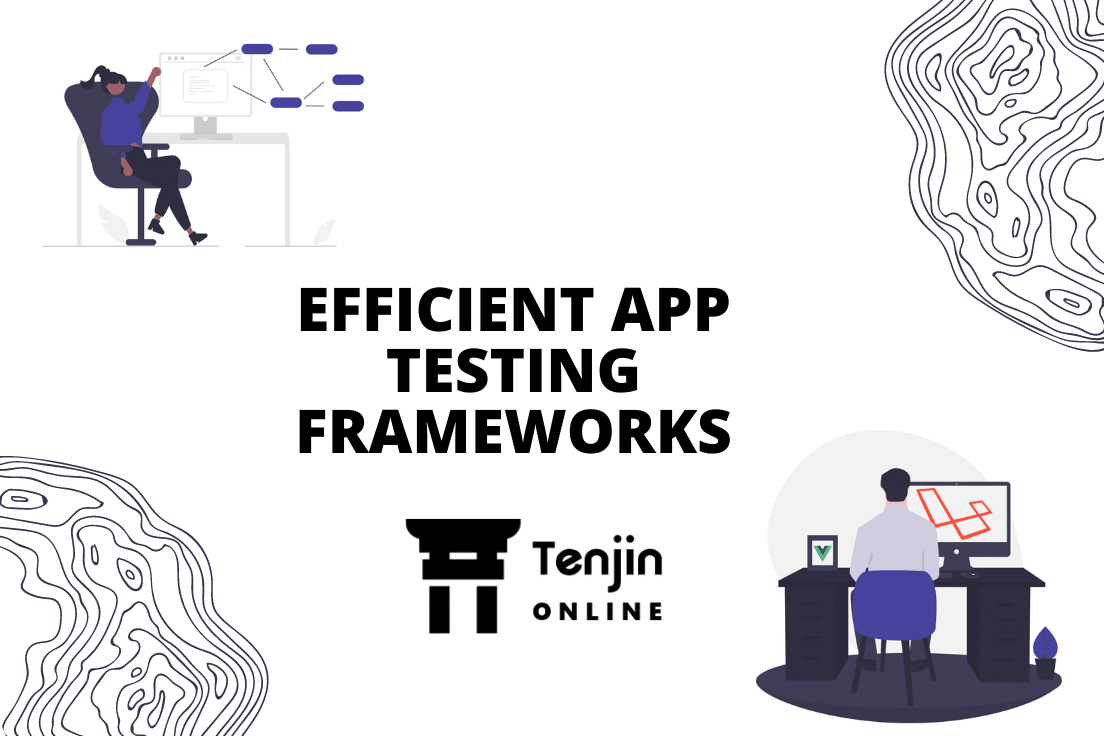
In today’s world driven by quality-centric culture, testing has become an integral part of the entire software development lifecycle to ensure the quality of the software is top-notch. As the emphasize on quality is increasing, there is also a tremendous increase in the advanced test automation tools and frameworks for both Android and iOS systems. Automation testing frameworks are combination of tools, rules, and practices to create and design test cases and help testers to efficiently carry out testing; without a framework, testing cannot be performed as expected.
Incorporating frameworks are an essential part of the test automation practice which increases the team’s productivity and efficiency, while improving the accuracy and consistency of the process. It also saves on time, mitigates risks, and lowers the cost of test maintenance. The immense benefits offered by frameworks have raised their demand making them mandatory for performing testing activities. There are a number of test automation frameworks available today, one should carefully make the choice based on their individual requirements.
Types of Mobile App Testing Frameworks
As advancement at the testing front is increasing significantly, the test automation frameworks are also evolving to align with modern test automation practices. There are various test automation frameworks one can choose from; these frameworks differ from one another based on the architecture and benefits they offer. Framework selection is an integral part of strategizing the test plan and it becomes extremely essential to choose the right framework for getting the desired outcome.
Linear Automation Framework: Linear automation framework is a sequential testing approach where the process is recorded in a linear sequence and the tester analyzes the recording to check if the application is performing as expected. It’s an easy way to understand the functionality of the app and check for discrepancies.
This a simple way to test the functional aspects of the app without having to write customized codes, and no advanced level skillset is required for the tester to conduct testing. Here, the tester doesn’t have to invest time in writing and reviewing test scripts as the process can be easily recorded and testing can be completed quickly. The linear framework is the simplest way to conduct automated testing which doesn’t need extensive planning and allows to understand the features of the application better in a sequential manner. Though the linear framework looks simple and easy to implement, it is a basic method that doesn’t offer flexibility to testing. Scenarios of testing re-run can be tedious as it involves a lot of alterations and revisions.
Data-Driven Framework: With the emergence of big data scenarios, companies are gathering the voluminous data generated to make the best use of them. In data-driven frameworks, testers use different data sets to test the functionalities of the application. It is the most preferred as it can execute multiple data sets under multiple scenarios by reducing the number of scripts required.
Data-driven frameworks need testers with advanced knowledge on programming to yield the best from this framework. It involves a considerable amount of time to set the framework and identify the data sets and script for the tests accordingly.
Modular Testing Framework: Modular testing framework offers testing of each function as a separate unit. Here, the application is split into different entity and test script is written for individual division tested in isolation. When the test results are positive for all the entity, it is combined, and testing is done for the entire build.
As testing is done in individual segments, the changes in one part will not affect the rest of the segments. Testing the application in different modules make the process easy and simple; however, the major drawback lies as multiple data sets cannot be used.
Library Architecture Testing Framework: Library architecture is similar to modular framework where testing of different entities is carried out in isolation. The difference between modular and library architecture framework is that in modular frameworks all the entities are divided into individual components, whereas, in library architecture, the similar functions of the application are grouped together who have a common objective. This kind of framework yields accurate results, supports scalable processes, offers easy maintenance, and is highly affordable.
Undoubtedly, library architecture testing framework offers efficient testing solution, but it requires testers with necessary skillsets to identify, evaluate, and group similar functions. It may require the testers to invest time and effort to develop test scripts based on the functional groups created.
Hybrid Test Automation Framework: Hybrid testing frameworks are the combination of the other frameworks that is powered by the advantages of the other models. It is designed to create a framework that can be proven beneficial, mitigate risk, yield great results, hassle-free, and reduces cost. Such hybrid frameworks are required to align with the modern agile software development processes.
Conclusion
One cannot neglect incorporating test automation frameworks as it helps in improving test efficiency, lowers risks, increases test coverage, lowers maintenance cost, and allows to reuse the codes, thus, saving immensely on time and effort. It is important to include the test automation framework, but the question is which one to choose. It is recommended to go for the framework that is flexible, can easily adapt, support various languages, and offers seamless integration. Testers often go for hybrid models that are customizable and provides the perfect environment to perform testing.

Leave a Reply
You must be logged in to post a comment.